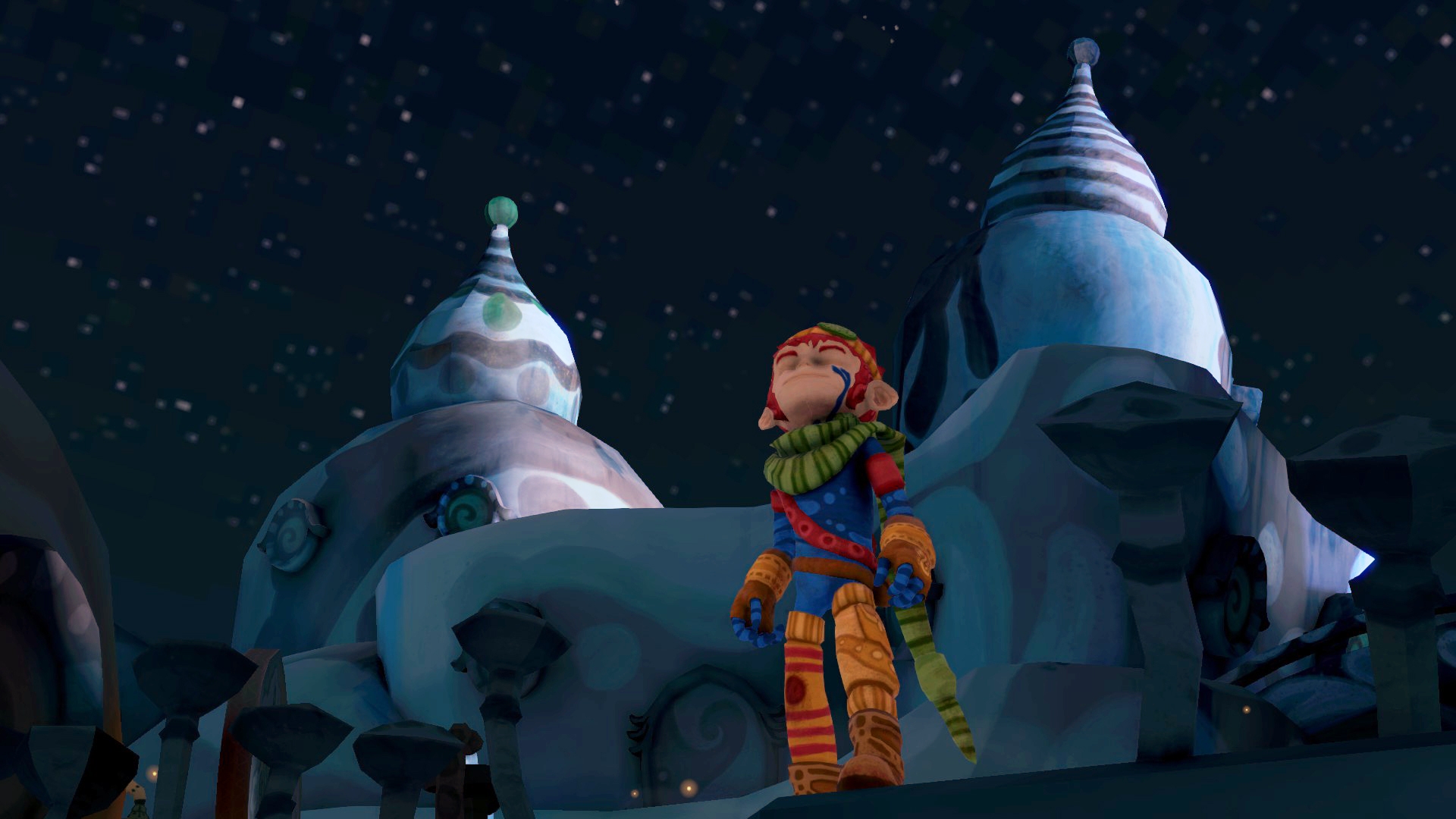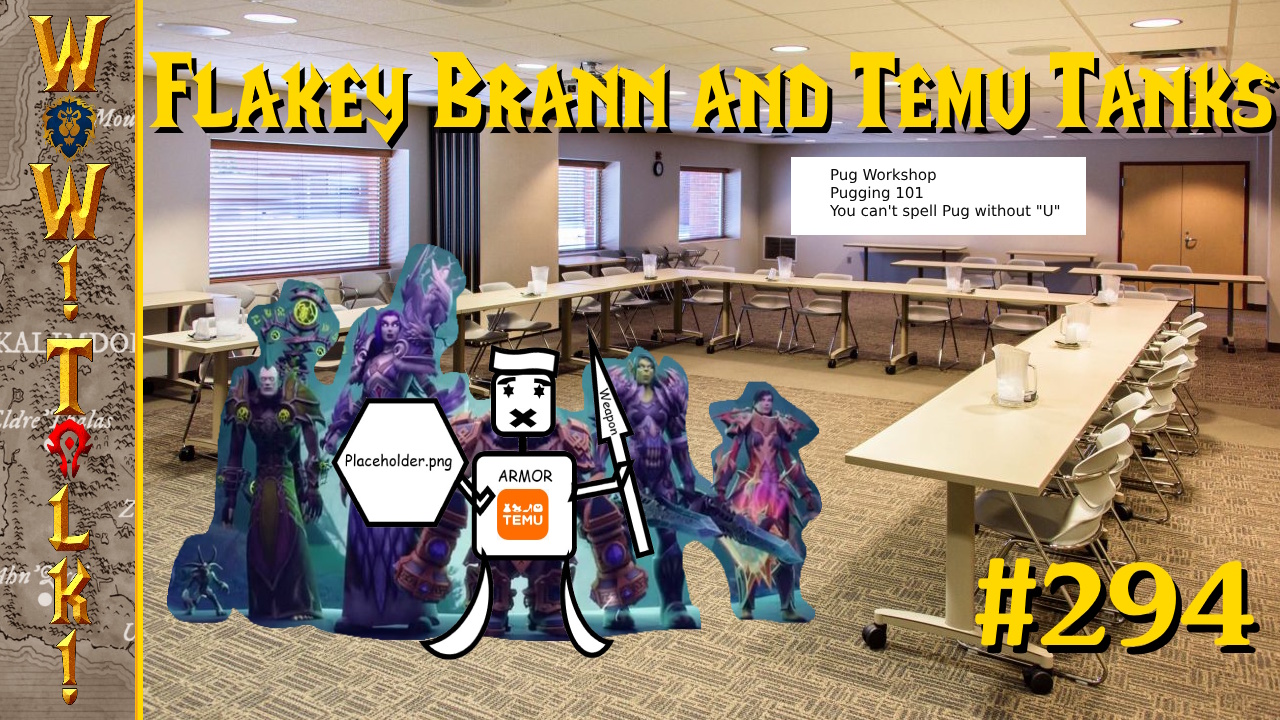The Last Tinker: City of Colors never lost even a little bit of its appeal and charm throughout my playthrough. The game’s bright locales and colorful characters gave each area its own visual appeal, tying in well to gameplay that required players return color to a bleak world. That stuff all looked good back in the preview I played, but what surprised me the most was how challenging the game got over time. With the auto-platforming and simple combat I saw in the preview, I thought the game would be a pushover, but the developers at Mimimi Productions have created a game that can pack a punch at points. It was a subtle difficulty curve, the one thing I was worried that the game might mess up, and managed to perfectly finish off this amazing, wonderful game.
The Last Tinker: City of Colors is mainly about experiencing the different colorful locales the devs designed. These places are pretty intricate, and while each area is focused on a specific color, they are anything but boring. Painted in shades of red, green, or blue, each of these towns is a sprawling metropolis of oddly-shaped houses and buildings – each filled with people dressed in all manner of hues of each color. I was a little worried that using a single color on each area would get dull, but the devs have used so many different shades in varied patterns that each area looks incredible anyway. It’s amazing what Mimimi Productions can do with a single color, and I enjoyed looking at their work in each location.
The people and characters are just as varied as the locations, showing different personalities just in passing. Their colors dictate certain personality traits, each seeming widely different than the others. Reds tend to be aggressive, greens are cowardly, and blues are, well, blue. What’s most interesting is that, as you play through the game and help these people get back together, they begin to mellow out, their character traits seeming to mingle as the colors mix together in a shared living space. It’s an interesting transformation to watch, and something I’m amazed came from an idea that seems so simple. The story of warring colors just seemed like it would be a silly but simple setup for a kid’s game, but the devs have put a lot of thought into making it work in interesting ways.
Looking around these cities filled with people isn’t something that’s as simple as taking a walk, though. You get to platform through a lot of it, and all in fun ways through an auto-platforming system. Instead of jumping in 3D space, which can get pretty hard or annoying, all you have to do is move toward something you can leap to while holding down the run button. If you’re running, you will automatically jump to the next place you can reach. This means that your character seamlessly jumps across narrow platforms, swings from bars, and walks tightropes with ease. It means there’s lots of time to take in the environment while you’re moving along, savoring the game without having to worry if you’re going to land a simple jump.
If that sounds too easy, the devs have found ways to make that challenging anyway. Many areas require that you pick the right path, as collapsing platforms will dump you into water or instant-death hazards if you screw up. Other times, you may have to jump through spinning cogs with perfect timing to slip by. Since moving along is so simple, the margins for error on a lot of these challenges are pretty small, demanding near-perfect timing. It never got frustrating, but the game did expect you to move quickly and choose the right path at points, adding just the right amount of challenge.
The hardest and best-looking parts of the auto-platforming areas were the rope slides. These were long ropes that lead across huge sections of the game, and I loved riding each one. They let you look out over whole cities, valleys, and other beautiful locations, all while moving at breakneck speed while having to dodge and leap to other ropes. You’re moving fast, so it can be pretty hard to dodge some of the objects in your path, but leaping from one rope path to another while narrowly avoiding a death trap just felt great. You’re expected to be very fast in these sections, but respawns are typically generously close to where you died so they never get very annoying. Also, the visual and gameplay appeal of weaving from rope to rope as you hurtle past giant trees and around mountains was always high.
With auto-platforming comes being allowed to screw up regular walking around, though. There are no invisible barriers around the edges of platforms in this game, so expect to fall a couple of times while finding this out. I wasn’t used to not having the game coddle me about platform edges these days, so I fell off quite a few times when I wasn’t as careful as I should have been while walking narrow paths. It only cost me one piece of health so it wasn’t a big deal, and it’s about time a game expected me to be careful again, anyway.
Speaking of health, the game starts off seeming quite generous with it. You can take a few hits right from the start, and even most falls and impacts only cost one ball out of the five or six you begin with. You can increase your health bar as you play through the game, which you’ll need to do as later enemies can tear off huge chunks of it with one hit. There are also some instant death traps that will eat up all of your health, sending you back to a respawn point, but those are pretty frequent so it usually isn’t a huge deal.
Even so, in later sections it can get pretty challenging. The respawn points start getting further and further apart as you move along, never to the point of being agonizing, but it’s still enough that you’d have to repeat some challenging sections again. Also, there are some huge brawls between you and the game’s enemies at points, and death during some of these gauntlets means starting them all over again. They started off so easy that I got a little lazy during some late-game fights, and there are enemies that will absolutely tear you apart if you’re clumsy. Like the platforming, things rarely got super hairy if you didn’t play like an idiot, but there were some areas where I had to stay on my toes.
The combat system plays a bit like Batman: Arkham Asylum with some odd additions. You can attack with your basic punch, and you can mix this up with the dodge button to do some different moves. If that sounds a little dull, you can also buy new combos and stronger moves using crystals you pick up throughout the game. On top of that, you also unlock different types of attacks as you free the spirits of each of the main colors in the game, such as green’s ability to make an enemy instantly run away if you punch it. Using your color power in combat is as simple as landing the punch of that color on the enemy, and the added effects actually gave me a whole lot of combat options by the game’s end. It’s pretty cool to be able to make an enemy run away if it’s giving you a hard time during a big fight, I’ll tell you.
The enemies have some good variety, with many showing their strength in combat with their size and build. You have basic brawlers that steadily increase in strength but also ranged ones that pick at you from the sidelines. Beyond them, there are shield enemies that teleport around the room and put barriers around basic enemies. These things are the bane of my existence, and need to die wherever they are found. Mixed together, these groups can make for solid, challenging fights in a game I thought was going to be a pushover. I started dying quite a bit around mid-game, and had to knuckle down and try harder than I thought I would have to. A little indicator will show up over an attacking enemy’s head to tell me I was about to get hit, but if you’re being clumsy and lazy like I was, that wasn’t enough to help you. The difficulty curve is still quite fair, but give this game a bit more credit than I did when I played. It’ll get harder than you think.
One issue I did have with combat was the camera. There’s no lock-on that I could find, so sometimes I would lose track of everything I was fighting or just spin the camera in a weird way. Enemies are always on top of you or within range to hit you, so not being able to see anyone at times was a huge problem. It could be fixed by moving around and righting the camera quickly, but it did bother me every once in a while during combat. It’s a lot less of an issue while platforming, but I did get knocked around by things I couldn’t see during more than one fight.
The enemies come from an interesting idea about the colors as well. The colors are being drained out of the world by something called the Bleakness, and your main job in the game is to get rid of it. The enemies all look like living humanoid-shaped blobs of this gray-white color, and some of the designs skew towards a bit creepy (Teleporting shield guy especially). This lack of color also means instant death if you touch it, and in some worlds you’ll have to run from an oncoming stream of colorless goo, or just have to dodge around it in the environment. It really stands out against all the color, so from a gameplay stance it’s easy to know when you’re in danger based on its design. It also just looks wrong in this colorful world, creating an almost instinctual revulsion for it. It’s a cool concept that, again, makes a simple idea about warring colors that much more interesting.
A lot of thought clearly went into the themes of this game. A lot of work, too, as making each color pop while only adjusting hues, creating tons of large and interesting environments, and telling a surprisingly deep story about colors fighting each other couldn’t have been easy. Experiencing all of it through fun gameplay just solidifies this game as a great overall package, as wonderful to watch as it is to play. The Last Tinker: City of Colors is just a great action/platformer, the sort of thing that evokes the child in me while I play it while also keeping me entertained with its challenge. Perfectly balanced, this is a fantastic game that never wastes your time and always keeps players having fun.
The Last Tinker: City of Colors is well worth the $19.99 it costs on Steam.


![The Last Tinker: City of Colors [Review]](http://cdn.mashthosebuttons.com/wp-content/uploads/2014/05/citizen_green_afraid.jpg)
![The Last Tinker: City of Colors [Review]](http://cdn.mashthosebuttons.com/wp-content/uploads/2014/05/slide_rails.jpg)
![The Last Tinker: City of Colors [Review]](http://cdn.mashthosebuttons.com/wp-content/uploads/2014/05/combat_02.jpg)



